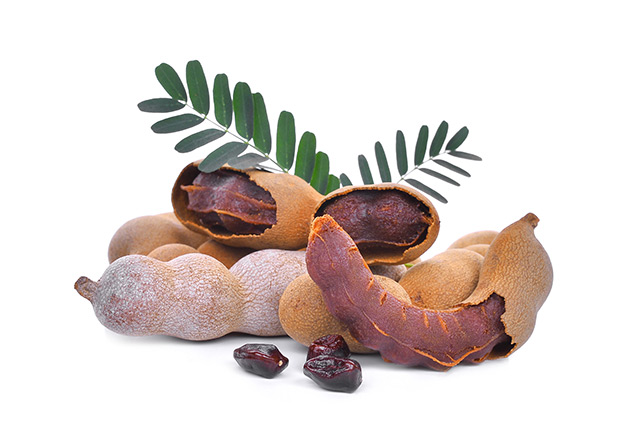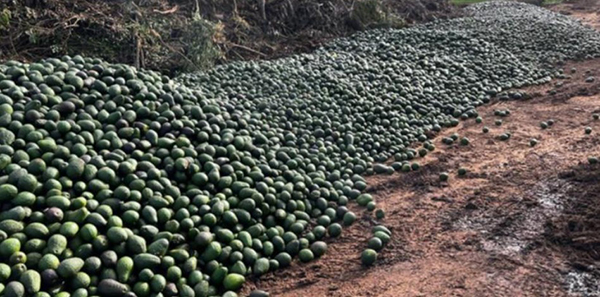Tamarind more effective than standard analgesics, study shows
12/17/2018 / By Ellaine Castillo

Painkillers are some of the most common medications that people take. This is because most health problems are associated with either acute or chronic pain. However, prolonged use of these drugs actually has adverse effects on a person’s health. Because of these repercussions, people are now going back to the safer choice, medicinal plants. An Indian study identified tamarind (Tamarindus indica) as one of the plants with potent analgesic activity.
Conventional analgesics include opioids and non-steroidal anti-inflammatory drugs (NSAIDs). These medications are commonly used by patients to relieve pain associated with surgery, injury, arthritis, headaches, and many other diseases. Although they are used by almost everyone, that doesn’t mean that they are safe. In fact, taking analgesics can cause side effects like constipation, drowsiness, stomach bleeding, heart attack, and liver damage. Fortunately, there are many medicinal plants that can be used as alternative remedies for pain.
Many are familiar with the sweet and sour fruit of tamarind, which is commonly used to make candies. However, not many people have seen the tree from which this fruit comes from. The different parts of this plant, which is native to African and Asian countries, are actually used in traditional systems of medicine like Ayurveda, Unani, and Siddha. Practitioners of these medicinal systems use tamarind to treat diseases like malaria, fever, stomach ache, wounds, diabetes, rheumatism, ulcers, sore throat, eye infections, and jaundice. In addition, specific parts of the leaves also have their own sets of biological activities. For the roots and bark, these include relieving pain and eliminating helminths. However, there are limited studies that validate these claims.
In this study, published in the Pharmacognosy Journal, the researchers evaluated the analgesic activity of tamarind root extracts through an in vivo experiment using albino Wistar rats. The animal models were treated with either the extracts or the conventional painkiller pentazocine. They used two tests to determine analgesic activity. One of these is the hot plate method wherein they checked the reaction time of the rat when exposed to a hot plate at 55 degrees Celsius. When rats are in pain, they exhibit this either by hind paw licking or jumping. The other test that was used was the acetic acid-induced writhing test. For both tests, the rats exhibited significant improvements in pain response, indicating that they were protected from pain.
The authors of the study also determined the antibacterial and anti-inflammatory activities of tamarind root extracts. For antibacterial activity, they tested the extracts against four pathogenic bacteria, namely Bacillus subtilis, Staphylococcus aureus, E. coli, and Pseudomonas aeruginosa. The growth of these species was effectively inhibited when they were given treatment. On the other hand, anti-inflammatory activity was based on the effects on carrageenan-induced paw edema in male albino Wistar rats. Rats that were given the treatment experienced significant reductions in paw inflammation.
Overall, the results of this study show that tamarind root extracts have potent analgesic as well as antibacterial and anti-inflammatory properties. With further studies, tamarind can be developed into an alternative remedy for pain and inflammatory disorders like rheumatism. (Related: Tamarind: Fruits that fight cancer, lower cholesterol and fight off cellulite.)
Health benefits of eating tamarinds
Tamarind fruits are more widely available than the other parts of the plant, which is good since it has its fair share of health benefits. Some of its benefits include the following:
- Improving heart health
- Regulating blood sugar
- Boosting the immune system
- Preventing heat strokes
- Promoting weight loss
- Reducing cancer risk
- Delaying aging
- Alleviating allergies
- Enhancing muscle and nerve development
For more articles about natural anti-inflammatory agents, visit NaturalHealth.news.
Sources include:
Submit a correction >>
Tagged Under:
alternative medicine, analgesic, anti-inflammatory, antibacterial, Antimicrobial, food as medicine, food cures, inflammation, inflammatory diseases, pain relief, remedies, Tamarind, Tamarindus indica
This article may contain statements that reflect the opinion of the author
RECENT NEWS & ARTICLES
COPYRIGHT © 2017 FOOD SCIENCE NEWS



















